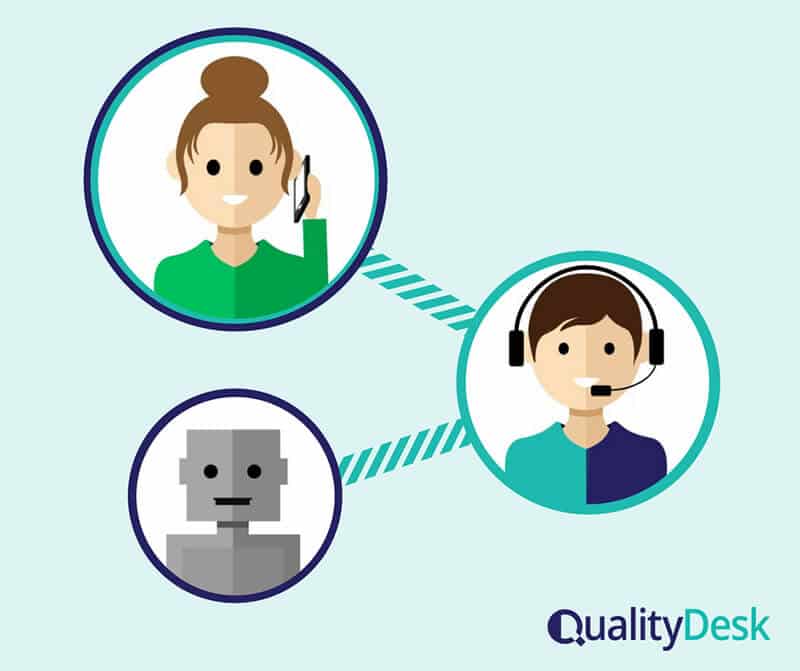Personally, I don’t really believe in this, and I certainly do not wish for it to happen. I do, however, believe in the usefulness and necessity of utilizing AI and robotics, but my perspective is a little different. Chatbots are a great example of the use of robotics in customer service, as long as the implementation is correct. At their best, chatbots will answer the customer’s questions efficiently and guide the customer to the right direction. If the chatbot’s answers have been written to give a human-like impression, it is possible that many customers won’t even realize that they are chatting to a robot. In more difficult cases, the chatbot will redirect the customer contact to a human. The chatbot recognizes these cases based on certain words, such as invoice, cancellation, reclamation, complaint and so on.
A robot can be an excellent assistant
Robots can also provide excellent customer service support. When a customer calls the customer service, a robot can instantly tell whether the caller is an existing customer or a new one. It can search for the customer’s information, either in the company’s own database or in public databases. At the same time, it can open the desired data systems for the customer service advisor and request further instructions, which the customer service advisor can give with a few clicks. The robot will then carry out the requested actions.
This allows the customer service advisor to listen to the customer, focus on what they need and show emotional intelligence by attuning their reactions to the customer’s situation without being distracted by various programmes and data searches. Think about the opportunities for add-on sales that this creates! When the customer service advisor can fully focus on listening, they automatically have the chance to recognize opportunities for add-on sales. And there is definitely room for improvement here – according to a global customer service study, 40.5% of customer support employees do not recognize sales opportunities during phone calls with customers.
So what is the human’s role in this situation?
Even though chatbots, artificial intelligence and robotics are developing at a rapid pace, the Finnish language creates some challenges when it comes to utilizing these technologies in Finland. Some are, however, already in use, and the Finnish start-up culture makes them accessible to everyone. Despite this, people still play an extremely important role in customer service. They offer the customers their humanity, attention, understanding and empathy. This means that interpersonal skills will become a central part of one’s professional competence. As chatbots and other robots will probably be redirecting the most challenging cases to human customer service advisors, the customer contacts are likely to become increasingly challenging. On the other hand, this is a million-dollar opportunity for businesses! When the customer service advisors are trained and coached to combine their emotional intelligence and interpersonal skills with add-on sales tactics, the existing customers can be satisfied regardless of difficult circumstances.
How can you recognize the need for training?
Once again, we return to the coaching skills that your personnel have. Automated solutions naturally exist as well, such as the quality assurance software that we offer. It allows you to monitor your customer service personnel based on different contact situations and aspects, scoring each aspect separately. When monitoring is done daily or at least weekly, automatic reporting functions can help you identify each customer service employee’s strengths and areas of improvement. Quality assurance software can also provide a simple way of monitoring work done by robots, which allows you to fine-tune the robot or to determine which situations should be handled by humans in the future. Contact me – let’s see if we can help you! You can also sign up for our newsletter to stay up to date on our articles.




